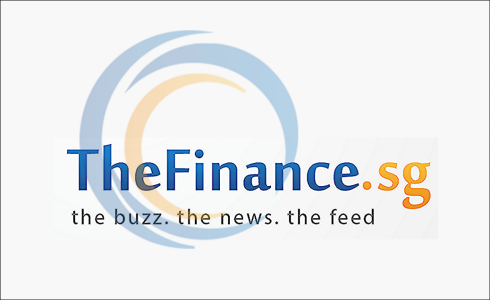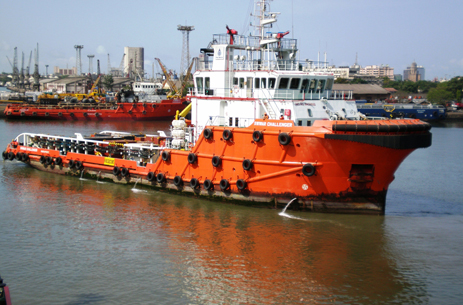We just heard news of Swiber sudden winding down. DBS is one of the main banks that loans money to Swiber, so their exposure is about 700 million. That's not a lot of loans, relatively speaking. 700 million is about 0.25% of their total outstanding loans in 2015 and it's about 15% of their total 2015 net profit. But they are confident of getting half of it back and after tapping onto their general provision, they are net loss of about 150 million. How much is that? It's about 3.3% of their 2015 net profit.
Is that significant? No, but the trouble is that it might not end there. Most likely, this is just the beginning of the oil and gas sector contagion that will spread eventually to the banks. When Swiber falls, people will be wondering who is the next company to fail. Ezra, ezion, vallianz, swissco and even sembcorp marine are possibly candidates. They might also have inter-related business interest that joins each other like blood brothers and sisters. So if one fails, it might cause a whole domino effect cascading down the entire oil and gas sector in Singapore.
Whoever is lending most aggressively to them will suffer the most. In their heydays, Swiber is a $6 stock and easily one of the most anticipated growth companies here in SGX. Heck, I even traded Swiber before. DBS and OCBC seems to be the more aggressive of the big local 3 banks, UOB being the more conservative one, so it seems. Maybe that's why the share price of the three banks dropped proportionally to the level of loans linked the the troubled oil and gas sector.
I heard news of 98 million shares of Ezra pledged to DBS and another 98 million shares pledged to OCBC as collateral. When the contagion spreads and the share price falls, it will lead to even more selling as nobody wants to be left with a worthless piece of paper as a collateral. We should expect more of such news in the coming months to come.
Is it a good time to scope up bargains in the oil and gas sector? Be greedy when others are fearful and fearful when others are greedy? I think it depends on your skill in navigating the rubbish from the gems. If you understand the sector well and can see which are the companies that can survive and thrive after the crisis blows over, you'll be the biggest winner. But I know I don't know anything about this, hence I will skip it. In the event of a major market sell-down catalyzed by the bankruptcy of the oil and gas companies, I will rather buy those companies that having nothing to do with this sector but nevertheless got their share price marked down severely, than to buy the troubled oil and gas company at a cheap price and hope that they will survive and thrive.
a) Good company, non troubled sector, low price
b) Good company, troubled sector, low price
c) Bad company, troubled sector, low price
Between the a,b and c, I think (a) should be the top most priority. (b) and (c) are the ones that can make you really rich, but do you have the skills to see separate the (c) from the (b)? It's not as if there's only this sector to focus on, so I'll skip it and live with my choices.
Is that significant? No, but the trouble is that it might not end there. Most likely, this is just the beginning of the oil and gas sector contagion that will spread eventually to the banks. When Swiber falls, people will be wondering who is the next company to fail. Ezra, ezion, vallianz, swissco and even sembcorp marine are possibly candidates. They might also have inter-related business interest that joins each other like blood brothers and sisters. So if one fails, it might cause a whole domino effect cascading down the entire oil and gas sector in Singapore.
Whoever is lending most aggressively to them will suffer the most. In their heydays, Swiber is a $6 stock and easily one of the most anticipated growth companies here in SGX. Heck, I even traded Swiber before. DBS and OCBC seems to be the more aggressive of the big local 3 banks, UOB being the more conservative one, so it seems. Maybe that's why the share price of the three banks dropped proportionally to the level of loans linked the the troubled oil and gas sector.
I heard news of 98 million shares of Ezra pledged to DBS and another 98 million shares pledged to OCBC as collateral. When the contagion spreads and the share price falls, it will lead to even more selling as nobody wants to be left with a worthless piece of paper as a collateral. We should expect more of such news in the coming months to come.
Is it a good time to scope up bargains in the oil and gas sector? Be greedy when others are fearful and fearful when others are greedy? I think it depends on your skill in navigating the rubbish from the gems. If you understand the sector well and can see which are the companies that can survive and thrive after the crisis blows over, you'll be the biggest winner. But I know I don't know anything about this, hence I will skip it. In the event of a major market sell-down catalyzed by the bankruptcy of the oil and gas companies, I will rather buy those companies that having nothing to do with this sector but nevertheless got their share price marked down severely, than to buy the troubled oil and gas company at a cheap price and hope that they will survive and thrive.
a) Good company, non troubled sector, low price
b) Good company, troubled sector, low price
c) Bad company, troubled sector, low price
Between the a,b and c, I think (a) should be the top most priority. (b) and (c) are the ones that can make you really rich, but do you have the skills to see separate the (c) from the (b)? It's not as if there's only this sector to focus on, so I'll skip it and live with my choices.














